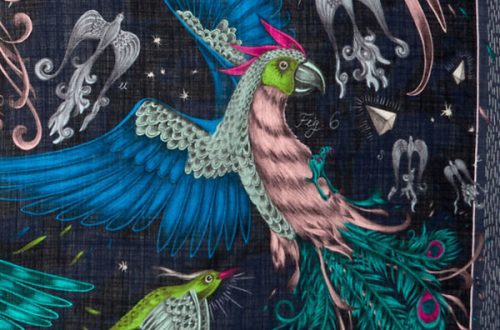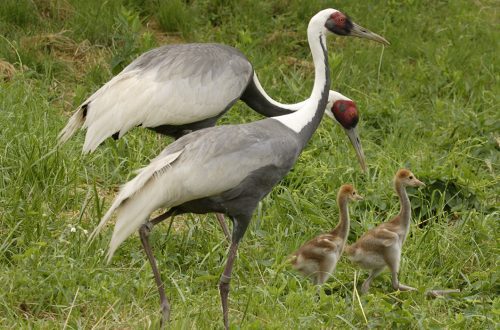
Breeds of wild French ducks: their features, habitat and lifestyle
Birds belonging to the duck family have a wide and streamlined body. On their paws they have flipper-like membranes. This family includes all subspecies of ducks, swans and geese. The largest representatives of ducks are mute swans, they reach a weight of up to 22 kg.
The family of ducks is the most numerous of all the goose-like waterfowl. Most of them were domesticated by man, the other part has been hunted for many years. Their ancestors lived on earth at the end of the Cretaceous period, about 60 million years ago. Their intended habitat was in the southern hemisphere. Now the representatives of the family are distributed all over the world, they are absent only in Antarctica.
All ducks are tied to water. At least one member of the family lives in every body of water around the planet.
The most common bird for breeding at home is the duck. What distinguishes them from swans and geese?
- Miniature size.
- Short neck and legs.
- A pronounced difference in color between males and females. Drakes have very bright, iridescent colored feathers. Females are painted in inconspicuous gray-brown colors.
The smallest duck weighs only 200g, while the largest domestic ducks reach a weight of 5 kg.
Ducks have adapted perfectly to their habitat.
- They do not need a long neck, like geese and swans. They can vertically submerge their heads in water. Many subspecies have become excellent divers, capable of diving to a depth of 20 meters and foraging from the bottom.
- Webbed paws made ducks excellent and fast swimmers.
- The membrane also helps to take off from the water surface with ease.
- A dense layer of down under the feathers protects the bird in severe cold. Their feathers do not get wet due to the excreted oil gland.
In the wild, ducks rarely live past 2 years of age. They feed on a large number of predators, they are prone to disease, and they are actively hunted.
Domestic duck can live up to 20 years. But in the economy it is not rational. Meat ducklings are killed at 2 months of age. Females that lay eggs are kept for 3 years, then they are replaced by young ones. Highly productive drakes are kept up to 6 years of age.
Pairs of ducks are formed depending on belonging to a particular group. Settled groups look for a mate in autumn. Migratory – on a joint wintering. There are always more males than females. Competition for females always leads to aggressive fights. Sometimes it comes to the point that a drake mates with a duck of another species. After this, hybrids are formed.
- The nest is built by the female. They often nest in the grass, but there are individuals nesting in trees. Nowadays, ducks can lay eggs in the attics of houses.
- The number of eggs in a clutch is within 5-15 pieces. When danger approaches, the duck moves the predator or person away from the nest, simulating the inability to fly.
- Ducklings are born with the ability to see and feed yourself. Their body is covered with down, after 12 hours they can already swim and dive. It is the ability to go under water that saves ducklings from predators. They acquire the ability to fly in about a month.
Contents
Wild ducks
Part of the wild ducks fly away for the winter, the other part chooses warm climate zones for permanent residence. Some species are often migratory, while others are sedentary.
There are wild ducks all over the world, except for Antarctica. Many breeds of ducks prefer to nest or winter in France.
What are the breeds of French ducks?
Lutok (small merganser)
Small representative of the species. It has a white, variegated plumage. Males in the mating season are especially recognizable – bright white plumage contrasts with a black back and a black pattern on the head and neck. Representatives of the breed live in fresh water bodies of northern Europe and Siberia.
Body length about 40 cm, weight in the range of 500-900 grams. Representatives of this breed of ducks can take off with a very short run. by water, so they live in small bodies of water that are inaccessible to other, larger birds. In cold winters, birds reach France and England, sometimes Iraq. Prefers to feed on beetles and dragonfly larvae. Unlike other representatives of the species, it rarely eats fish and plant foods.
Mallard
The most common breed of duck. Exactly most domestic ducks were bred from it by selection. Considered a large duck. Body length – 60 cm, weight – up to 1,5 kg. The mallard has the most noticeable sexual dimorphism. Even the beak of females and males of this breed has a different color. This breed of wild ducks is most widely distributed in the northern hemisphere. They migrate to the territory of France and Great Britain. They live in fresh and brackish waters, preferably in the forest zone. Some individuals are migratory, while the rest remain to winter on non-freezing rivers in large cities.
Peganka
Large representative of the species. A striking distinguishing feature of the breed is plumage., combining white, red, gray and black colors. Males of this breed are almost indistinguishable from females. In the mating season, drakes have a cone-shaped growth on their beak. Not a typical water duck breed. It feeds in the grass, has the ability to run easily and quickly. Breeds in Europe and Russia. In severe winters, they migrate to the coasts of Britain and to France. It eats exclusively products of animal origin: insects, mollusks, fish and worms.
Pintail
It is considered one of the most attractive wild ducks. The breed is distinguished by its slenderness and elegance. They have elongated graceful neck and long thin tail, similar to a needle. They are capable of fast flights, but almost never dive. The second most common duck in the world. This breed of ducks inhabits Europe, North America and Asia. A small number of individuals nest in Spain and in the south of France.
Shirokonoska
It got its name because of its long and wide beak. Males and females are markedly different. Drake in the mating season has a bright color – His head, neck and back are painted in a blue-green metallic hue. Breeds in temperate climates in Eurasia, France and North America. This breed is a favorite object of sport hunting.
Teal whistle
The breed is widespread west of the British Isles, in France and almost throughout Russia. The smallest representative of river ducks. Weight within 500g, body length – 35 cm. Distinguished by its narrow pointed wingswhich allows them to take off vertically. This feature gives them access to small shady reservoirs, inaccessible to large birds. The male in breeding attire is very handsome. The abdomen is painted in a transverse jet pattern, the tail with yellow spots on the sides. The head is chestnut in color with a green stripe passing through the eye.
red-headed pochard
Excellent diver. It descends to a depth of 3 meters. In this case, he is helped by a short tail and a long neck. The drake is painted in three colors: the head is red or red, the chest is black, and the back is whitish. The female has a similar color, but much paler. Takes off for a long time, but flies very fast. Initially, the breed lived in the steppe zone, then spread to the British Isles, France and Iceland.
Gray duck
A very popular representative. The physique is similar to the mallard, but somewhat more graceful. The bird is very “sociable”, emits a cry even in flightreminiscent of the voice of a raven. A typical French “resident”. The largest concentrations of this breed of birds are noted in France and Algeria. They nest throughout Europe and North Africa. Preference is given to plant foods. But in the mating season diversify the diet and animal feed.





